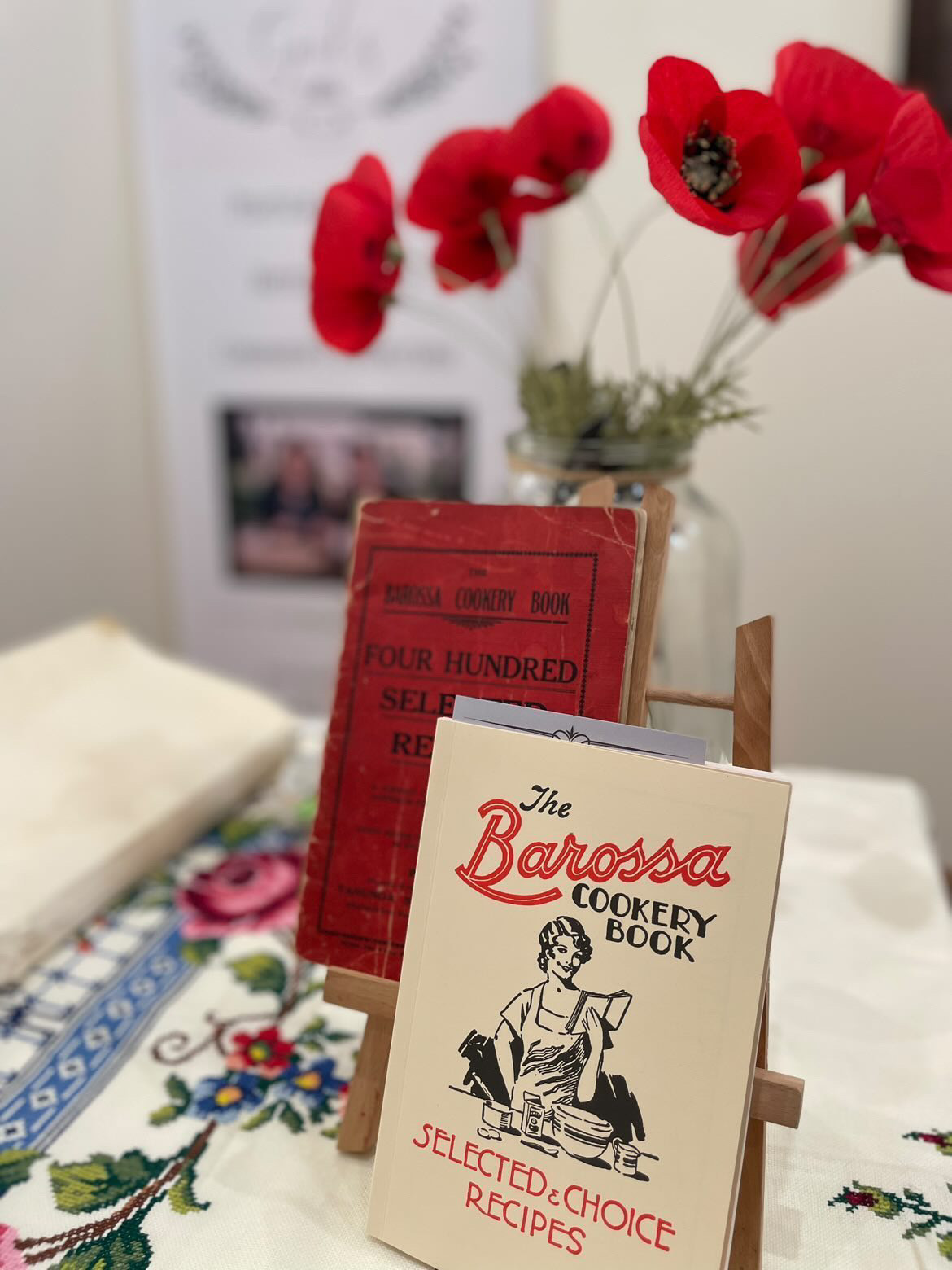Who remembers the book ‘Playing Beattie Bow‘ ?
It was written by Ruth Park and it’s the story of a young girl in Sydney who becomes absorbed in an old-fashioned game called ‘Beattie Bow’. The game wraps her up in a time slip and she’s suddenly making friends with people from 100 years ago.
Well… I feel just like that!
For the last few weeks I’ve been making the trip into the South Australian State Library to trawl through microfilm reels of the ‘Barossa News’. For the first two trips I made the 45-minute drive into the city, but the $40 for parking made that idea pretty unattractive pretty quickly. Today I joined the ranks at the Gawler train station, and wondered why I don’t do that more often. It was easy. And cheap! Followed by a beautiful walk past Parliament House, Government House, and the treelined North Terrace with its statues. I love the sandstone buildings of The State Library, the Museum, the Art Gallery, and Adelaide University’s Bonython Hall. It makes me feel like a Uni student again, immersed in the people, and buildings, of learning and ideas and culture.
Inside the library I’ve become quite the expert at the microfilm set up. I know exactly which shelf the films for the ‘Barossa News’ are on. Third box along in the tray is the reel for 1920-1931. I’ve also become quite the expert at loading the microfilm machine. A few quick flicks with some overs and unders and voila…we are ready to go.
I started the research a few weeks ago with Eliza who is a history student from Adelaide Uni and is our research fairy. She’s the one who showed me how this magical wonderland of microfilm works. We started in 1917 looking for information about the first release of the cookbook, which we found. Since then I’ve been going solo and working my way through 1918, 1919, and 1920. It’s fascinating to see the newspaper each week as the war ground on. I saw the published death notices for some of Tanunda’s sons, and knowing their mother’s stories makes reading those clippings so much more heartbreaking. Even though I know the ending, it’s like I’m watching it unfold in front of me, powerless to intervene. There are stories about fundraising events that mention the names of so many of our recipe contributors. I love that I can scroll the pages and there’s our girls Flo, Gertie, Alice, Edith, Emma, Selma…and so on. It’s like they are alive in front of me, doing their incredible fundraising war work. I’m reading letters to the editor, and recounts of events and meetings. It’s almost a real-time immersion into war time Barossa.
Today I found an article for Viola Nettelbeck’s wedding. Viola was part of the prominent Nettelbeck family who lived in the big house adjacent the cutting as you drive into Tanunda. (You know when you go under the big arch, with the stone walls either side? Look up to your left – that’s where she grew up) She married the local land Agent, Fritz Homburg. Viola and Fritz became prominent citizens in the town and Fritz served on many committees. Viola played an instrumental role in establishing the Tanunda Croquet Club (you may remember I talked about them a few weeks ago) and she also led the band of volunteers who compiled the 1932 edition of the cookbook. I loved reading the article of her wedding. I could see a movie reel flicking in my head the whole time. Seriously, I think we do need to make these women into a movie. Does anyone know a good screenwriter?
Anyway, with 11 minutes left on my microfilm machine (you only get two hours) I found an article that was really part of the reason I was there. I’ve been particularly looking for information about the timber Honour Roll that hangs in the Tanunda Soldiers Memorial Hall. Like the Hall, the Honour Roll shares an intertwined history with the cookbook, and as a piece of carved timber, it’s stunning. Like, really stunning. If you’ve ever been into the Hall, you’ll know exactly what I mean. If you’ve never seen it, I encourage you to visit. It lists the names of everyone from the town who served, and those who died. But more importantly, it was obviously carved by an artist of considerable skill, and there is some talk of it being of national significance. But no-one knows who the artist was – hence the need for information. The article talked in detail about the opening ceremony, and the hymns they sung. There’s details of the sermon from Reverend Walker from the Anglican Church, the way the Union Jack and Australian Flag parted to reveal the Honour Roll, and the words of bravery and sacrifice. I read the article again several times on the train on the way home and googled the hymns. I listened to them as the train rolled through the northern suburbs while a group of kids were swearing loudly about how they’d just been suspended from school. I wanted to play the hymn to them and remind them just how lucky they are, but to them I’m just a boomer listening to ridiculous music on a phone, so I didn’t. But despite all it’s beautiful detail, the article says nothing about who carved the Honour Roll. And now I can’t let it go, so next week I’ll have to go back in again and see what else I can find.
Which suits me perfectly, because I’ve come to love my weekly trips to the State Library’s Spence Wing, were I hang out with a microfilm machine. And all my friends from 1921.
Cheers Keepers
Sheralee



Leave A Comment